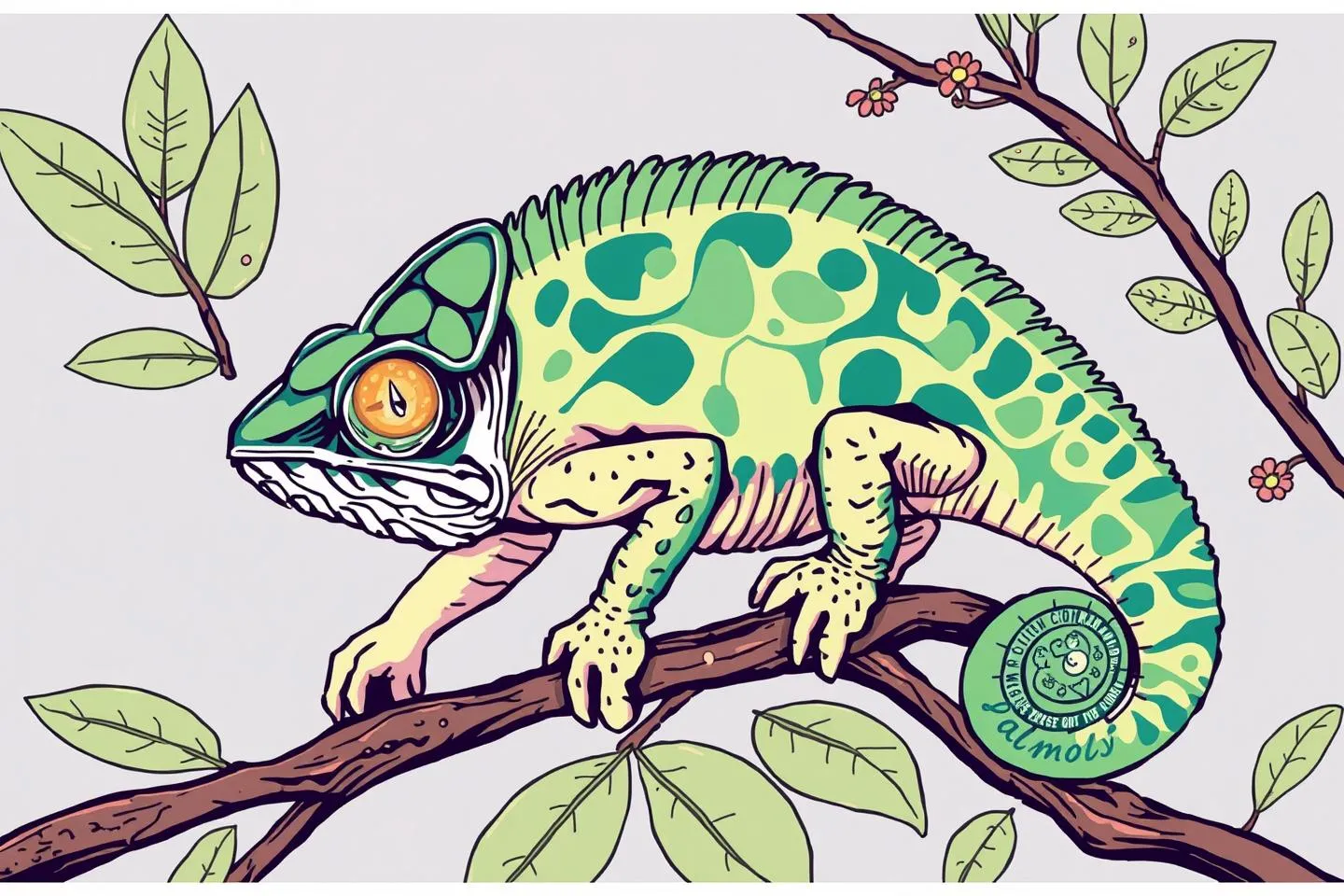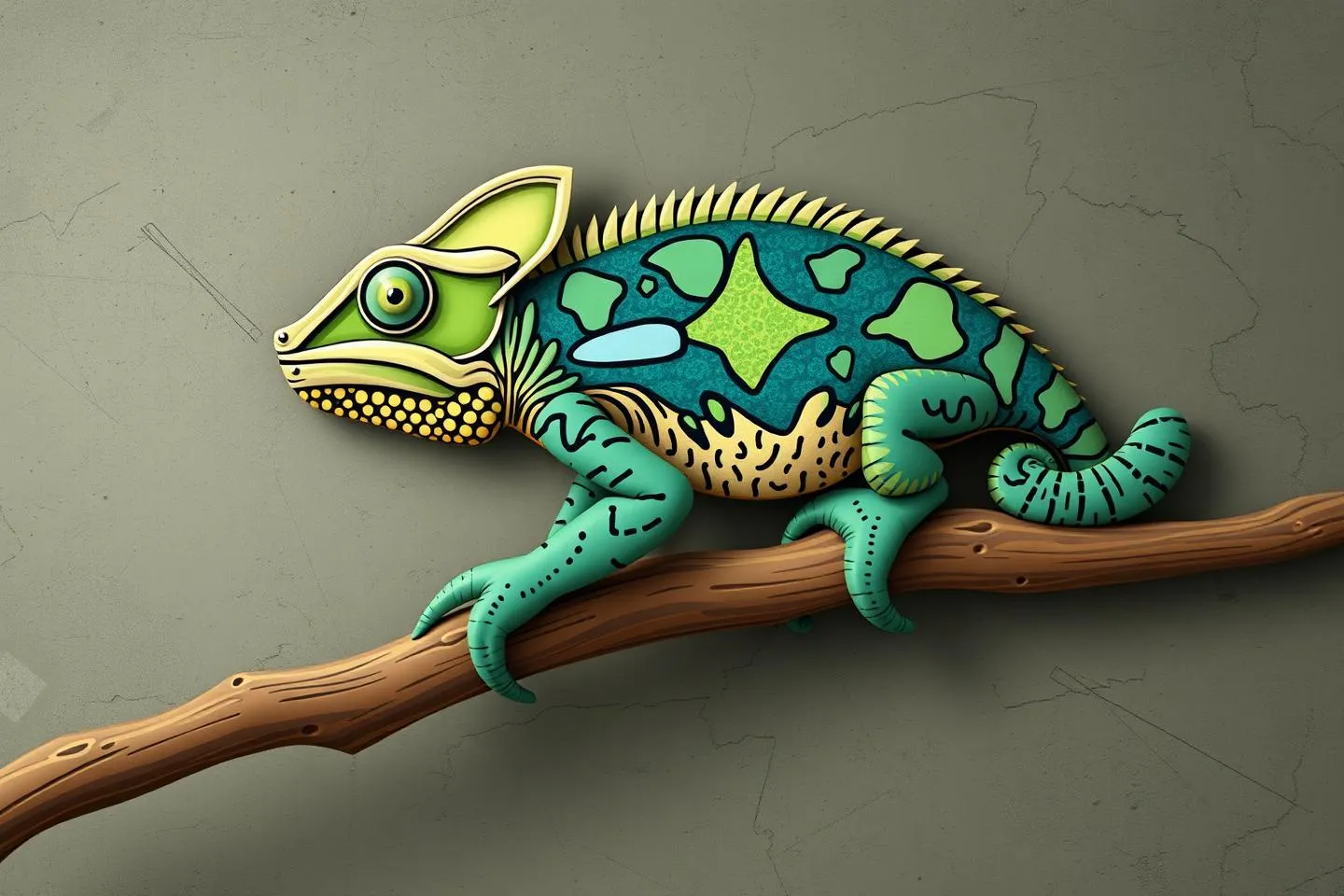Chameleon Symbolism: A Journey Through Adaptation and Transformation

The chameleon, with its mesmerizing ability to change colors and blend into its surroundings, has long captivated human imagination. This enigmatic reptile is more than just a creature of the wild—it is a powerful symbol of adaptability, transformation, and patience. Across cultures and centuries, the chameleon has been woven into myths, art, and spiritual practices, offering profound insights into the human experience. Let’s explore the rich symbolism of the chameleon, from its ancient origins to its modern-day significance.
Ancient Myths and Cultural Perceptions
The chameleon’s symbolic journey begins in the realm of ancient myths and folklore. In many African traditions, the chameleon is seen as a messenger or a bridge between worlds. For instance, in Zulu mythology, the chameleon is associated with the creation of humanity. It was believed that the chameleon was sent by the gods to deliver the message of eternal life to humans, but its slow pace caused it to be overtaken by a lizard, which brought the message of mortality instead. This tale highlights the chameleon’s connection to themes of time, fate, and missed opportunities.
In ancient Egypt, the chameleon was linked to the sun god Ra, symbolizing the cyclical nature of life and the ever-changing qualities of existence. Meanwhile, in Greek and Roman cultures, the chameleon was often depicted in art and literature as a creature of mystery and illusion, embodying the idea of transformation and the fluidity of identity.
Over time, cultural perceptions of the chameleon have evolved. While some societies viewed it as a trickster or a symbol of deceit due to its color-changing abilities, others revered it as a totem of wisdom and adaptability. These shifting interpretations reflect humanity’s complex relationship with change and the unknown.
The Essence of Chameleon Symbolism

At its core, the chameleon symbolizes adaptability, a trait that resonates deeply in a world that is constantly in flux. Its ability to change colors is not just a survival mechanism but also a metaphor for navigating life’s challenges with grace and flexibility. The chameleon teaches us to embrace change rather than resist it, reminding us that transformation is a natural part of growth.
Another key trait associated with the chameleon is patience. Known for its slow, deliberate movements, the chameleon embodies the idea of waiting for the right moment to act. This quality is often linked to mindfulness and the importance of timing in achieving success.
The chameleon’s natural behaviors also carry symbolic weight. Its camouflage represents the ability to blend in and observe without being noticed, a skill that can be valuable in both personal and professional settings. Additionally, its independent nature underscores the importance of self-reliance and staying true to oneself, even in the face of external pressures.
Across different cultures, the chameleon has been interpreted in various ways. In some African traditions, it is seen as a symbol of wisdom and foresight, while in others, it represents duality and the balance between opposing forces. These diverse interpretations highlight the chameleon’s universal appeal as a symbol of complexity and depth.
The Chameleon in Modern Culture
In contemporary society, the chameleon continues to inspire and intrigue. Its symbolism has found a place in art, fashion, and design, where its vibrant colors and transformative qualities are celebrated. Artists often use the chameleon as a motif to explore themes of identity, change, and self-expression. In fashion, the chameleon’s ability to adapt and reinvent itself has become a metaphor for personal style and individuality.
The chameleon’s presence in media and advertising is equally noteworthy. In films and television, chameleons are often portrayed as characters who can seamlessly adapt to different situations, reflecting the human desire for versatility and resilience. Advertisers, too, have tapped into the chameleon’s symbolism to promote products that emphasize flexibility, innovation, and transformation.
In modern cultural narratives, the chameleon serves as a powerful metaphor for the challenges of navigating an ever-changing world. Whether it’s adapting to new technologies, shifting social norms, or personal growth, the chameleon reminds us of the importance of staying open to change and embracing the unknown.
Spiritual Lessons from the Chameleon
The chameleon’s spiritual significance is deeply rooted in its symbolic traits. In many religious and mythological traditions, the chameleon is associated with transformation and rebirth. Its ability to shed its skin and change colors is seen as a metaphor for spiritual renewal and the shedding of old habits or beliefs.
In some African spiritual practices, the chameleon is used in rituals to invoke protection, wisdom, and clarity. Its presence is believed to help individuals navigate life’s challenges with greater insight and adaptability. Similarly, in New Age spirituality, the chameleon is often seen as a spirit animal that guides individuals through periods of transition and self-discovery.
The chameleon’s teachings are both practical and profound. It encourages us to embrace change with an open heart, to remain patient in the face of uncertainty, and to trust in our ability to adapt and thrive. By embodying the chameleon’s qualities, we can cultivate a deeper sense of resilience and inner peace.
Exploring Related Themes
The symbolism of the chameleon is often intertwined with other powerful themes. Change is perhaps the most prominent, as the chameleon’s ability to transform itself serves as a reminder that change is not only inevitable but also necessary for growth. Similarly, the concept of camouflage extends beyond the physical realm, symbolizing the ways in which we adapt our behavior or appearance to fit different situations.
In psychology, the chameleon is often used as a metaphor for emotional intelligence and the ability to empathize with others. Just as the chameleon changes its colors to blend in, individuals with high emotional intelligence can adjust their behavior to connect with different people and navigate social dynamics effectively.
On a personal level, the chameleon’s symbolism can inspire us to reflect on our own lives. Are we embracing change, or are we resisting it? Are we patient and deliberate in our actions, or are we rushing through life without fully experiencing it? By asking these questions, we can draw valuable lessons from the chameleon and apply them to our own journeys of self-discovery and growth.
The Chameleon in Daily Life
The chameleon’s symbolism is not just a source of inspiration—it can also be a practical guide for navigating the complexities of modern life. In a world that demands constant adaptation, the chameleon reminds us to stay flexible and open-minded. Whether it’s adjusting to a new job, building relationships, or pursuing personal goals, the chameleon’s qualities of adaptability, patience, and self-awareness can serve as valuable tools for success.
Moreover, the chameleon’s ability to blend in while maintaining its individuality is a powerful reminder to stay true to ourselves, even as we adapt to different circumstances. In a society that often pressures us to conform, the chameleon teaches us the importance of balancing authenticity with flexibility.
Conclusion
The chameleon is far more than a fascinating reptile—it is a timeless symbol of transformation, adaptability, and resilience. From ancient myths to modern-day metaphors, its symbolism has evolved to reflect the complexities of the human experience. By embracing the lessons of the chameleon, we can navigate life’s challenges with greater wisdom, patience, and grace. Whether in art, spirituality, or personal growth, the chameleon continues to inspire us to embrace change and celebrate the beauty of transformation.